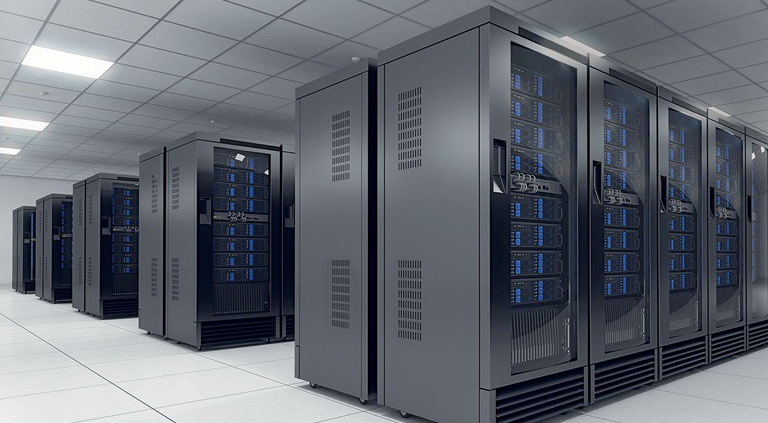VRLA vs Lithium Battery for UPS: A Practical Guide for Data Center Backup Power
In modern IT infrastructure, Uninterruptible Power Supply (UPS) systems play a critical role in ensuring business continuity during power outages. At the heart of every UPS is its backup battery, responsible for bridging the gap between an outage and generator kick-in or safe shutdown. The two most common battery technologies in use today are Valve-Regulated Lead-Acid (VRLA) and Lithium-ion batteries.
This guide compares both options, especially for data center backup power, highlighting key differences in performance, maintenance, and long-term value.
What Is a VRLA Battery?
A VRLA battery is a sealed lead-acid battery designed to be maintenance-free. It uses a pressure-regulated valve to recombine gases internally, making it safer and more user-friendly than traditional flooded lead-acid types. It comes in two main subtypes: Absorbent Glass Mat (AGM) and Gel Cell.
Pros:
- Lower upfront cost
- Well-established technology
- Readily available and easy to integrate with existing UPS systems
Cons:
- Shorter lifespan (typically 3–5 years)
- Sensitive to ambient temperature fluctuations
- Still requires periodic testing and checks
- Larger and heavier than lithium alternatives
What Is a Lithium-Ion UPS Battery?
Lithium-ion batteries are an increasingly popular choice for UPS applications. They use advanced chemistry and built-in Battery Management Systems (BMS) to ensure safety, extended life, and real-time monitoring.
Pros:
- Longer lifespan (up to 10–15 years)
- Higher energy density (smaller footprint and lighter weight)
- Broader operating temperature range
- Faster recharge and deeper discharge capabilities
- Smart diagnostics and thermal management via BMS
Cons:
- Higher initial cost
- Requires more robust thermal and safety controls
- Recycling infrastructure still catching up
Side-by-Side Performance Comparison
| Category | VRLA Battery | Lithium-ion Battery |
| Typical Lifespan | 3–5 years | 10–15 years |
| Size & Weight | Bulky and heavy | Compact and lightweight |
| Maintenance | Manual inspection required | Minimal, BMS-managed |
| Temperature Tolerance | Optimal at 20–25°C | Operates well from –10°C to 40°C |
| Recharge Time | 8–12 hours | 1–3 hours |
| Lifecycle Cost | Low upfront, higher long-term | High upfront, lower long-term |
| Monitoring | Basic | Advanced, real-time via BMS |
Application Scenarios
- Space-Constrained Facilities
Recommendation: Lithium-ion
High energy density and a smaller footprint make lithium batteries ideal for edge computing environments or small data centers.
- High Ambient Temperatures
Recommendation: Lithium-ion
Lithium batteries can handle higher temperature fluctuations without significant performance degradation, reducing cooling load.
- Frequent Cycling or Rapid Recharge Requirements
Recommendation: Lithium-ion
Lithium batteries support more charge/discharge cycles and faster recharging—ideal for hybrid power systems or frequent backup cycling.
- Short-Term Projects or Budget Constraints
Recommendation: VRLA
For deployments with limited budgets or a short intended operational timeline, VRLA offers a lower capital expense.
- Legacy System Compatibility
Recommendation: VRLA
In facilities where VRLA infrastructure, training, and workflows are already in place, maintaining this consistency can be cost-effective.
- Low-Tech or Manual Monitoring Environments
Recommendation: VRLA
For remote or low-tech sites, VRLA’s simplicity may be preferable when active battery monitoring is not feasible.
Maintenance and Monitoring Needs
Battery maintenance is essential regardless of chemistry, but the methods differ significantly.
VRLA Maintenance:
- Monthly or quarterly visual inspections
- Terminal and voltage checks
- Internal resistance testing
- Controlled ambient temperature is critical
Lithium Maintenance:
- BMS handles voltage, temperature, and health checks
- Less human intervention required
- Alerts and predictive failure signals built-in
- Easily integrated with remote monitoring systems
Tip: Perform full-load UPS discharge tests periodically, not just idle voltage checks.
Lifecycle Cost Consideration
Though lithium-ion batteries cost more upfront, they often offer better Total Cost of Ownership (TCO) in critical environments due to:
- Fewer battery replacements
- Reduced cooling needs
- Lower maintenance overhead
- Improved uptime and reliability
For long-term data center backup power strategies, these advantages often outweigh initial capital costs.
Environmental and Sustainability Considerations
Sustainability is increasingly influencing data center design. Lithium-ion batteries offer:
- Lower energy consumption through efficient charging
- Fewer replacements, reducing material waste
- Easier integration with renewable energy sources
However, VRLA has a well-established recycling infrastructure, whereas lithium recycling processes are still maturing.
Final Thoughts
When choosing between VRLA and lithium-ion batteries for UPS, consider the overall system lifecycle, not just initial expense. While VRLA may be ideal for traditional facilities with budget limitations, lithium-ion brings compelling benefits for modern, high-availability environments.
There’s no one-size-fits-all solution. The right choice depends on operational goals, system compatibility, space, and long-term sustainability planning. A thorough analysis of these factors will help ensure uninterrupted power, whether you’re running a large colocation site or a distributed edge node.


